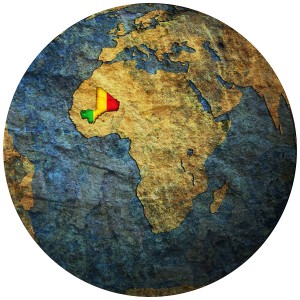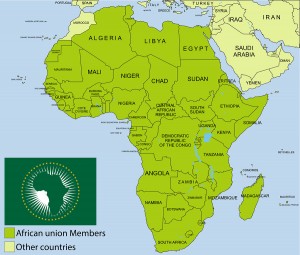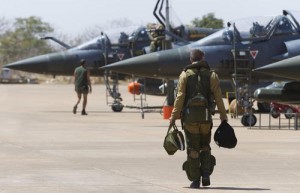2013-03-04 By Murielle Delaporte
Editor, French magazine “Soutien Logistique Défense”( http://www.sldmag.com) and co-founder, Second Line of Defense.
*** This article is based on an interview with the French forces in Mali and lessons learned from recent French operations and military training.
The entire French approach is embedded in both history and the transformation of French expeditionary capabilities. From history comes the experience of working in Africa and shaping partnerships with African nations. From recent experiences – Afghanistan, Ivory Coast and Libya in particular – are operational “lessons learned” applied to the continuing challenge of projecting force into crises.

From the beginning, the Mali operation was seen as requiring the rapid insertion of force at the moment when the adversary had begun to aggregate force. The idea has been to disperse the adversary, assist the Africans in assembling means to deal with the challenge, and to withdraw.
Insertion, support and a capacity to return rapidly to strike again against an adversary able to aggregate force are the emerging French approach.
As part of the support effort, allies – the US and Canada, as well as many European nations such as Britain, Belgium, Denmark and Germany to name a few – have been involved as well. But the French effort shows the importance of clear command and control as well as national control over force projection and autonomous capabilities.
And the mission has been founded a core idea: Never Without Support .
This phrase was the one given by British ground troops to helicopter support during their missions in Afghanistan. This is the key principle now widely embedded in the mental furniture of any XXIth century military planner.
The 4,000 French forces currently involved in Mali in the fight against Al-Qaida affiliated insurgents (more forces than in Afghanistan with a withdrawal calendar initiated last year) are applying this principle to the letter – and in all senses of the words – both at the tactical and strategic levels.
Shock and Awe the French way: Joint Tactical Support
A rapid and massive offensive was generated to block the insurgents from reaching Bamako who were within reach of the capital within a matter of days. It was initiated by the French government on January 11th, 2013 after a request for help came from the President of Mali.
A month later, as the Commander of the French Army Aviation in Mali explained in a recent interview, “the enemy has been taken by surprise and is now destabilized. Because of the lightning speed of the maneuver by the Serval (the name given by the French to the operation) force, the insurgents are now fleeing and not willing to fight as they did not expect such concentration and mobility above their heads.”

Even though the war has of course not been won yet, the operation of joint air and ground raids to unloose the Gordian knot of AQIM (Al Qaida In Maghreb), and other insurgents groups, which were making Mali a terrorist safe haven at the doorsteps of Europe, has been crucial.
This effort has been possible due to several factors:
The first factor is the speed of the French forces and their ability to act from the outset in a matter of hours as far as air operations were concerned.
For example, on the Air Force side, the very first strikes made by the Rafale fighters taking off from the FAB Saint Dizier were done thanks to an unprecedented nine hours and thirty-five minutes flight involving five air-to-air refueling.
On the Army side, it took only two days for the French Army Air Mobility Group (GAM for «Groupe aéromobile») to be operational and in autonomous operation after a strategic airlift from the South of France to the capital of Mali involving close to 300 men and 20 helos.
As a French officer involved in the operation has noted: “after leaving Bamako for Sevare five hundred kilometers further on January 26th, then leaving again for Gao on February 6th five hundred kilometers further, I have available the support tools of nearly a full regiment ranging from my air control tower (…) to spares allowing me to last for months.”
The rapid surge of the Serval force, which should soon count in particular three battalion-sized Task Forces (GTIA for « Groupement tactique interarmes »), has also been facilitated by France’s historic presence and defense commitments in this part of the world (e.g. the Epervier operation in Chad since 1986 and the UN Unicorn operation in Ivory Coast since 2002).
France was able to leverage various national assets currently based in other African countries.
Mobility and concentration of forces have also been rendered possible by good C2 and joint training and experience between the French Air Force (Rafale and Mirage 2000D fighters and N’Djamena-based JFACC), the Navy (with the amphibious assault ship BPC Dixmude bringing ground elements ashore and with the Atlantique 2 maritime patrol aircraft crucial to coordinate CAS operations between Army aviation and ground troops) and the Army.
According to a French military source in Mali, Army helicopters were able to carry “reconnaissance or raid offensives as well as support operations, such as fire support for the 2e REP (2nd Foreign Legion parachute regiment) in Timbuktu so it could regroup in the best conditions possible”.
This airborne operation was the first of this size since Kolweizi in 1978. Another airborne operation was successfully conducted a bit later (on February 7th) in Northern Mali to secure Tessalit involving French special operation forces as well as French and Chadian conventional forces.
Not Fighting Alone: the Need for Speed in Strategic Support
From the beginning, the French intervention was not seen as an isolated event, but as one designed to clear the path for coalition forces to take over the mission.
Chadian armed forces indeed amount to 1,800 men and are part of a total African force of 4,100 being currently mobilized to fight along the side of the French troops and gradually take over as early as the end of next month.
This support is absolutely key to prolong the deterrent effect of the French initial military action and has been made possible by the months of preparation, which took place before it occurred ahead of schedule, as is the one of the international community via the United Nations and/or other organizations.

The latter is slowly, but surely picking up with a growing number of allied countries’ logistic and support assets being gathered to help French and African armed forces’ sustainability on a theater where vast elongations and the ability to hold a difficult territory are the key challenges.
Transport aircraft and tankers have been sent early on by the United States and European countries, while the Eindhoven-based European Air Transport Command is increasing its involvement (the participation of a Dutch KDC10 and soon of a German A310 MRTT tanker is one of the most recent developments).
In other words, from a French prospective, the goal is to start reversing the balance between supported and supporting forces as early as the end of March in order to prevent the “Afghanisation” of the conflict feared by many, but in a secure, responsible and coordinated manner.
From this point of view, European military training, which is also kicking in, will also be a key factor to make sure African ground troops have the best chances to secure the whole land of Mali.
Recent progress in Somalia with the EU training mission (EUTM) now under the command of Brigadier General Gerald Aherne from Ireland (in two years 3,000 Somali troops have been formed in police and anti-terrorist missions) feeds the hope among allies that, after more than a decade of ground entanglements, a long term success of a new type of lighter footprint coalition support is attainable.
http://defense.aol.com/2013/01/30/asd-mike-sheehan-yemen-somalia-are-models-for-mali-and-afgha/
The French approach is very much about how to intervene and to trigger coalition operations in order to stabilize the situation with regional partners, rather than to simply stay in place for a long time. It is “shock and awe” to deter the enemy and to trigger space for coalition success, not “shock and awe” for the sake of staying.
For other pieces on Second Line of Defense on the operation see the following:
https://sldinfo.com/the-mali-intervention-an-initial-assessment/
https://sldinfo.com/france-europe-and-the-mali-challenge/
https://sldinfo.com/the-french-serval-operation-the-double-edged-sword-of-the-mali-operation/
https://sldinfo.com/france-and-mali-what-role-for-coalitions/
https://sldinfo.com/us-airlift-to-support-to-french-forces-in-mali-operation/
For a BBC video report on Mali dated February 8, 2013 see the following:
http://www.bbc.co.uk/news/world-africa-21379270
An earlier version has been published on AOL Defense
http://defense.aol.com/2013/02/19/mali-frances-version-of-shock-and-awe-add-allies-crush-aqim/

